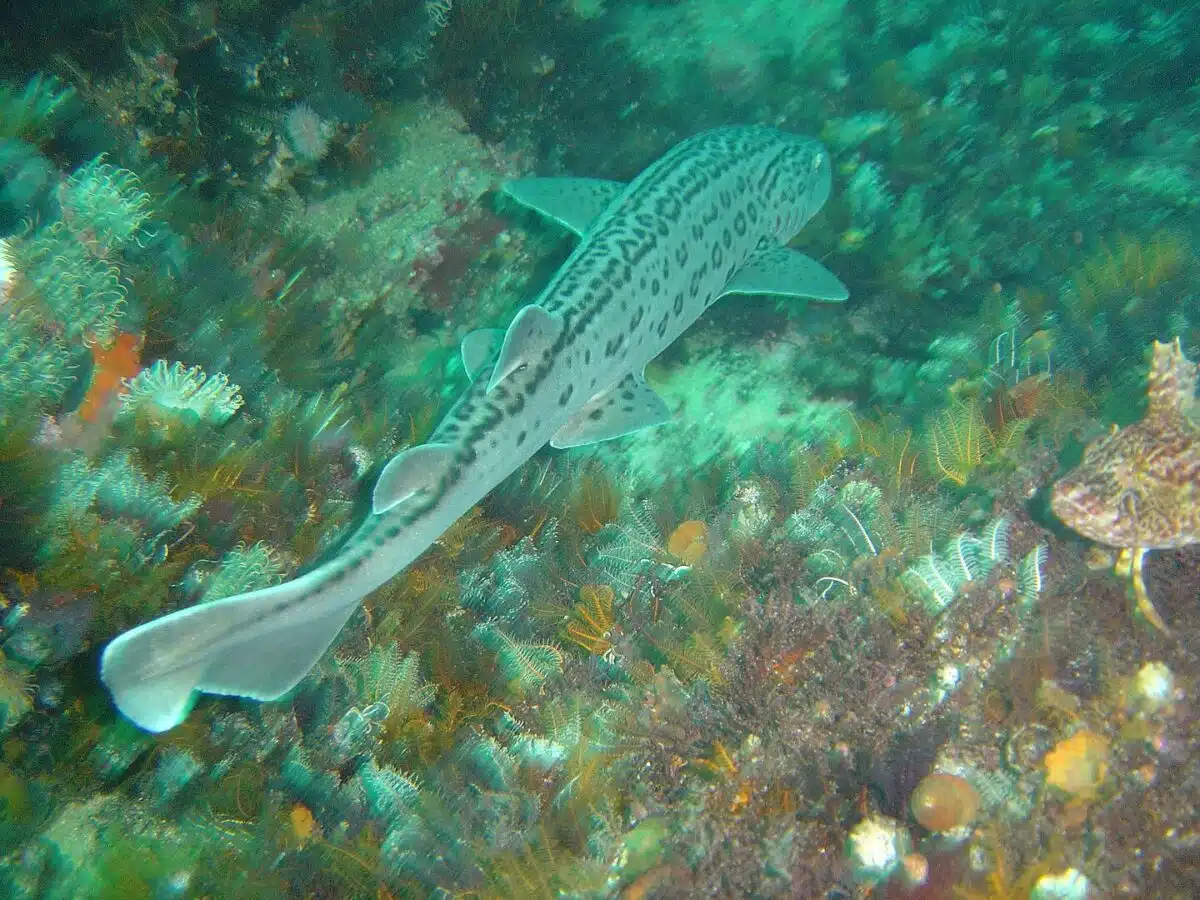Kelp forests stretch extensively along South Africa’s coastline, notably around the Cape Peninsula and up the west coast. These dense, underwater forests, composed primarily of large brown algae, create a unique and rich habitat for a myriad of marine life. Charles Darwin, profoundly struck by their ecological significance, once remarked, “I can only compare these great aquatic forests with the terrestrial ones in the inter-tropical region. Yet if in any country a forest was destroyed, I do not believe nearly so many species of animals would perish as would here, from the destruction of the kelp.” (1 June 1834, Tierra del Fuego, Chile). This description underscores the immense biodiversity and the critical ecological role of kelp forests. Their canopies offer shelter, food, and breeding grounds for various species, from small invertebrates to larger fish and sharks. South Africa’s kelp forests are home to a variety of small but fascinating shark species.
Leopard Catshark (Poroderma pantherinum)
The Leopard Catshark, Poroderma pantherinum, is a small, distinctive shark species native to the coastal waters of South Africa, particularly common in the kelp forests. This species typically measures up to 80 cm in length as adults and is known for its unique, leopard-like pattern. Despite its small size, it plays an important role in the marine ecosystem. This nocturnal predator hunts for small fish and invertebrates.
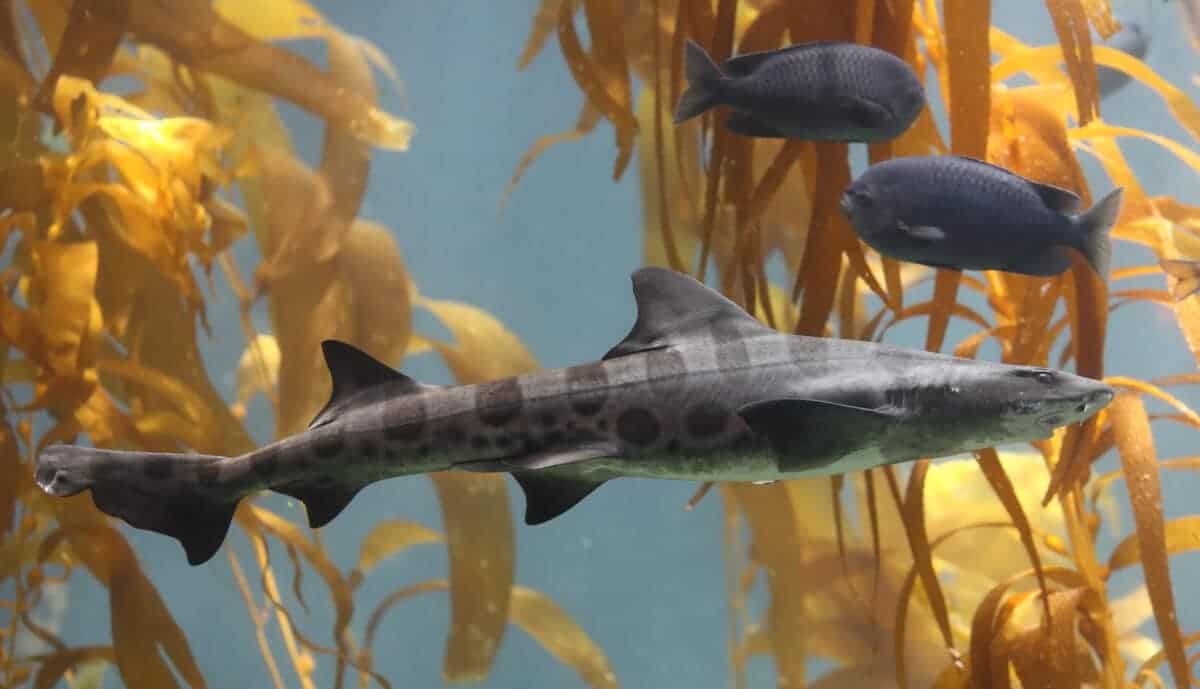
Pyjama Catshark (Poroderma africanum)
The Pyjama Shark, scientifically named Poroderma africanum, commonly inhabits the coastal waters of South Africa, especially within the kelp forests. This species, easily recognized by its striking striped pattern, reminiscent of pyjamas, typically reaches about 1 m in length. It is a notable predator within its habitat, contributing significantly to the marine ecosystem’s balance. Due to its abundance and distinct appearance, the Pyjama Shark is also a popular species exhibited in public aquariums. The pyjama shark is a bottom-dweller which feeds mainly on bony fish, cephalopods, and crustaceans.
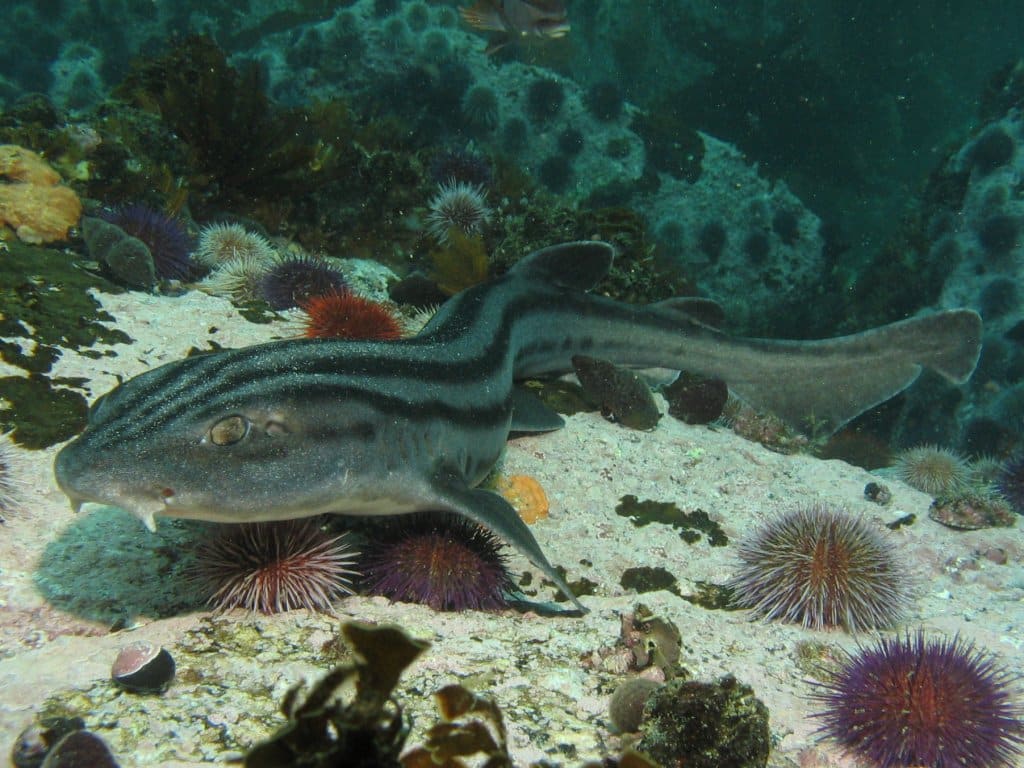
Puffadder Shyshark (Haploblepharus edwardsii)
The Puffadder Shyshark is endemic to South Africa’s coastal waters. This small shark grows to only about 60 cm in length. Its unique coloration helps it blend into the kelp forest floor, where it feeds on crustaceans, mollusks, and small fish. When threatened, the Puffadder Shyshark curls into a circle and covers its eyes with its tail.
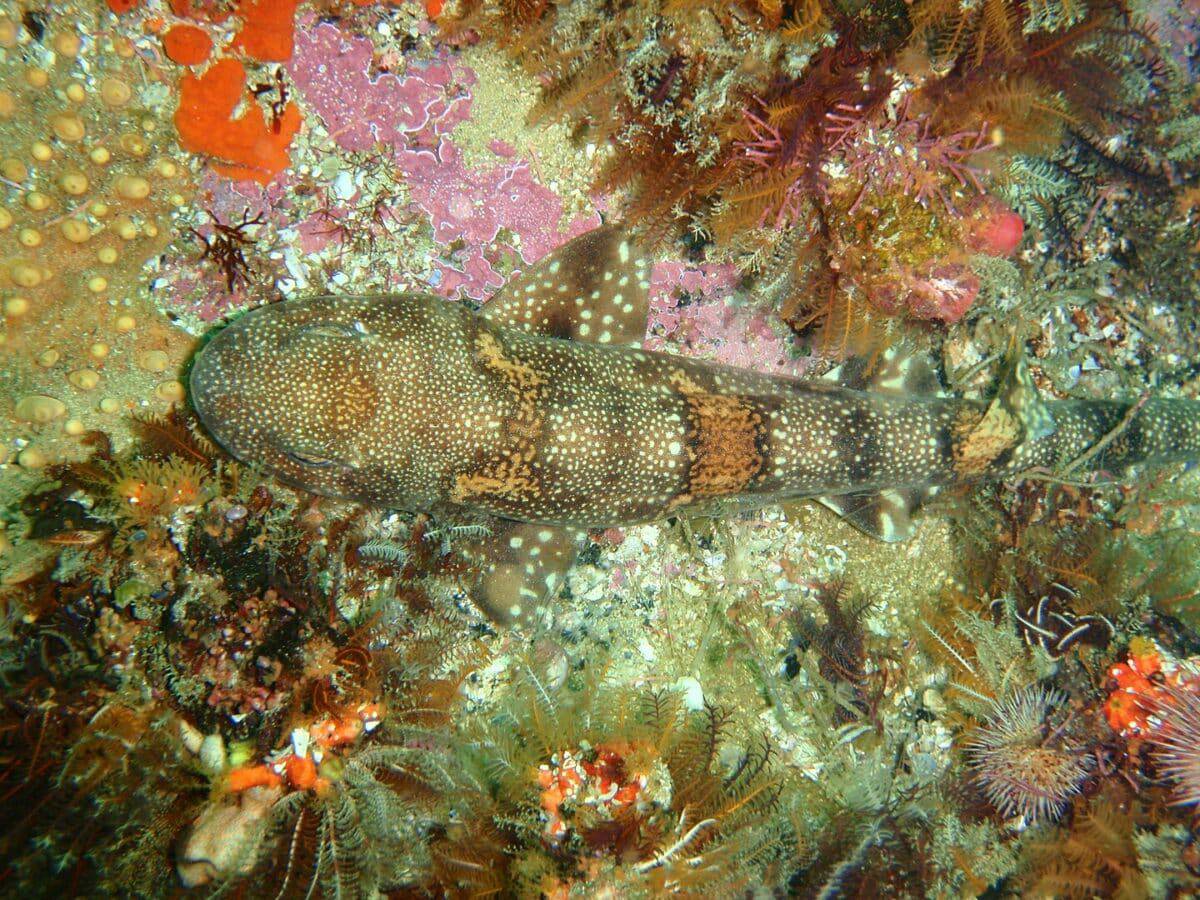
Dark Shyshark (Haploblepharus pictus)
The Dark Shyshark, Haploblepharus pictus, is a small, fascinating shark species indigenous to the temperate waters off the coast of South Africa. The Dark Shyshark, typically measuring up to 50 cm, exhibits a dark brown color with lighter spots. It is notable for its timid nature and a distinctive behavior of curling into a ring and covering its eyes with its tail when feeling threatened, a trait common among other shysharks.The Dark Shyshark, like its relatives, plays a vital role in the marine ecosystem, primarily feeding on small invertebrates and contributing to the ecological balance of its habitat.
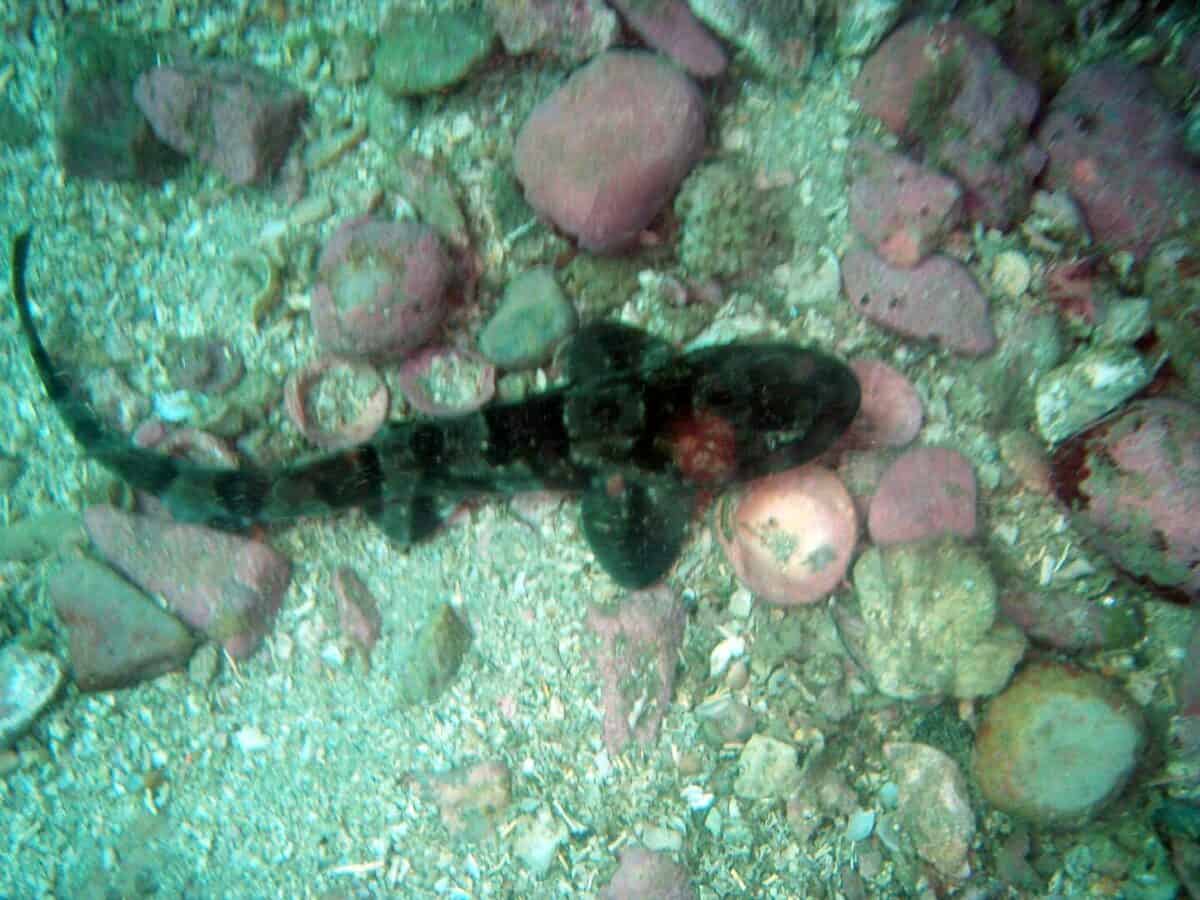
St. Joseph’s Shark (Callorhinchus capensis)
Also known as the Cape Elephantfish, the St. Joseph’s Shark can reach a length of 1.2 meters. It has a unique, elephant-like snout and feeds on invertebrates found on the ocean floor in depths of between 10 to 370 m. This species is found in the temperate waters around South Africa.
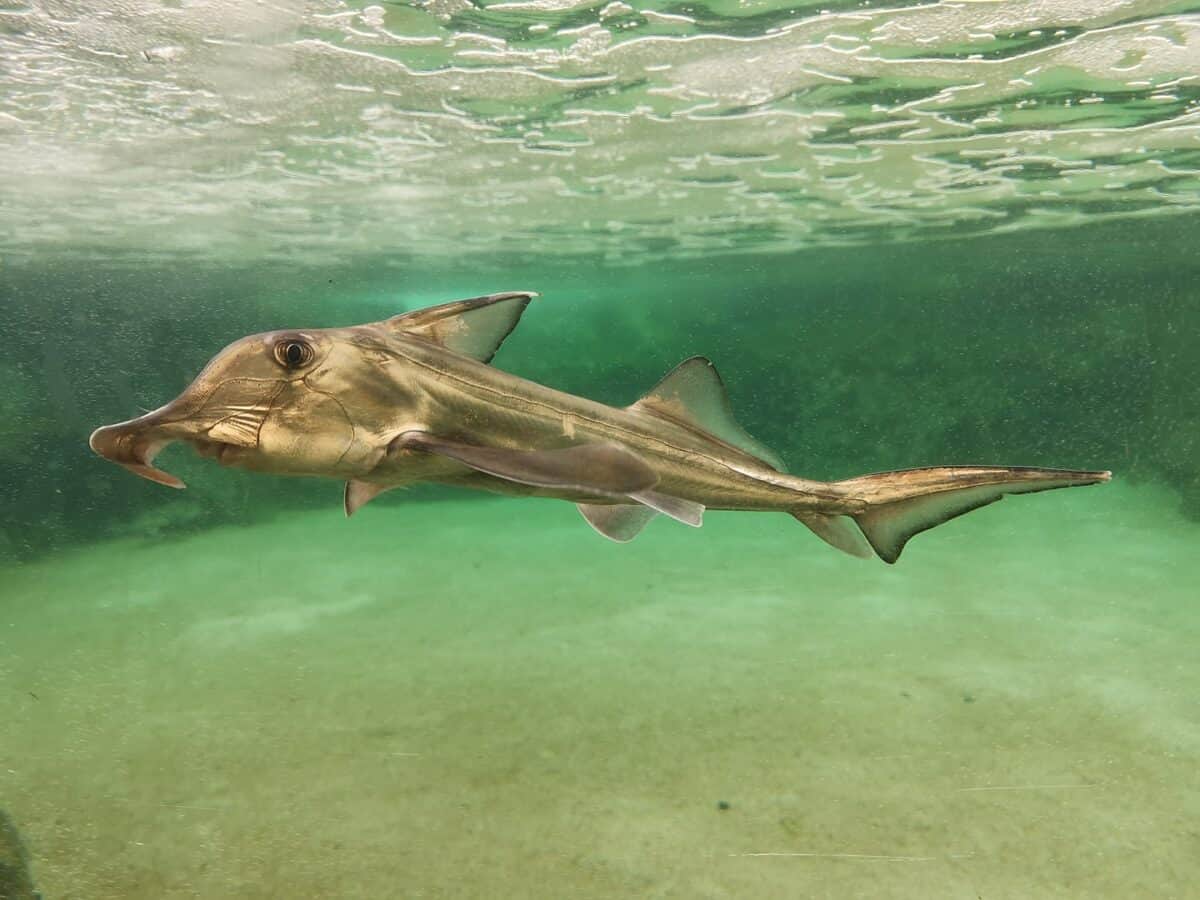
Conclusion
These sharks, each with their unique adaptations, play a crucial role in the ecosystem of South Africa’s kelp forests. They are not only fascinating in their behavior and biology but also vital indicators of the health of these underwater ecosystems.
You might also enjoy:
Great White Shark Vs. Australian Box Jellyfish
The Great White Shark vs. The Lethal Irukandji Jellyfish
Fearsome Saw-Scaled Viper Bite
20 Shark Species Found in North Carolina
Join our Forum for free today!

- The Bond Between a Wild Baby Bison and Her Rescuer - July 20, 2024
- An Excited Husky’s First Ever Time in Snow - July 20, 2024
- Top 20 Colorful Species To Brighten Your Day - July 14, 2024

